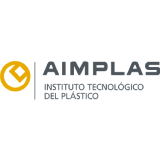What is the chemical recycling of plastics?
El reciclaje químico es un proceso que convierte los residuos poliméricos cambiando su estructura química para producir sustancias que se utilizan como materia prima para la fabricación de nuevos productos, lo que excluye la producción de combustibles o medios de generación de energía.
Las tecnologías de reciclaje químico están emergiendo rápidamente, con el potencial de aumentar el progreso de Europa hacia la gestión sostenible de los desechos plásticos. Estos procesos complementan los del reciclaje mecánico, donde este último resulta ineficiente, como es el caso de plásticos difíciles de reciclar o no reciclados como multicapas, residuos muy contaminados o residuos del reciclaje mecánico.

¿Cuándo se utiliza el reciclado químico?
El reciclaje químico podría reducir la cantidad de plástico que termina en los vertederos, lo que podría reducir la liberación de productos químicos nocivos en el medio ambiente. El reciclaje químico también puede producir materias primas de alta calidad, lo que reduce la demanda de combustibles fósiles y otros recursos naturales. Y a medida que se desarrolle esta tecnología, el reciclaje químico podría promover los negocios y el empleo domésticos, creando un mercado para los desechos plásticos y una nueva forma de reutilizar algunos plásticos.
Además, a diferencia de los productos de plástico reciclado con los que puede estar familiarizado, el reciclaje químico tiene el potencial de producir un plástico reciclado de muy alta calidad, que puede ser indistinguible del plástico nuevo.
Finalidad del reciclaje químico
El reciclaje químico complementa los procesos de reciclaje mecánico al permitir una mayor extracción de valor de los polímeros que han agotado su potencial económico para el procesamiento mecánico. El reciclaje químico sirve como una alternativa al vertedero y la incineración de productos plásticos que antes eran difíciles de reciclar, como películas, plásticos multicapa y laminados. Además, el reciclaje químico suministra materias primas de calidad virgen a la cadena de suministro de plásticos. Esto permite la producción de plásticos de calidad alimentaria a partir de residuos posconsumo.
Ventajas del reciclaje químico
Acelera la economía circular y proporciona nuevos medios para aumentar las tasas de reciclaje al utilizar una gama más amplia de residuos plásticos que el reciclaje mecánico tradicional permite la producción de productos finales de alta calidad (nuevos plásticos y productos químicos) que se pueden utilizar como soluciones inmediatas en todas las aplicaciones actuales de alternativas basadas en combustibles fósiles disminuye la dependencia de las importaciones de crudo y reduce la huella de carbono de los productos
apoya la reducción global de los desechos plásticos y ayuda a eliminar gradualmente los vertederos puede crear nuevos puestos de trabajo en Europa y en otros lugares.

¿Cuáles son los diferentes tipos de reciclaje?
- Residuos de Papel y Cartón
El reciclaje de papel es vital para garantizar que reduzca su impacto ambiental y para reducir los desechos generales innecesarios.
- Plástico
Hay alrededor de 50 grupos diferentes de plásticos, con cientos de variedades diferentes. La mayoría de los tipos de plástico son reciclables y, debido a esto, deben reciclarse para reducir la cantidad de desechos que se envían a los vertederos y ayudar a evitar que la basura termine en los océanos.
- Reciclaje de metales
Todos los grados de metales ferrosos y no ferrosos son reciclables para uso futuro. Debido a que los metales no pierden calidad cuando se reciclan, podemos reciclar el metal muchas veces.
- Dispositivos electrónicos
El reciclaje de RAEE es para el reciclaje de residuos de equipos eléctricos y electrónicos, que es casi todo lo que funciona con una batería o un enchufe, como computadoras, teléfonos móviles y televisores.
- Reciclaje de madera
La madera es el material renovable por excelencia debido a su gran número de usos diferentes.
La madera puede reutilizarse como material de construcción, reciclarse en mantillo para paisajismo. Incluso la madera de baja calidad es útil porque podemos usarla como combustible para generar energía ecológica.
- Vidrio
El vidrio es 100% reciclable y nunca pierde pureza ni calidad cuando se recicla, lo que significa que podemos reciclarlo muchas veces.
El vidrio puede tardar alrededor de un millón de años en descomponerse por completo, lo cual es un gran problema para los vertederos que se llenan demasiado. Es fundamental garantizar que reciclamos la mayor cantidad de vidrio posible.

- Ropa y Textil
Con el auge de la “moda rápida” en los últimos años, estamos comprando más ropa que nunca y, por tanto, tenemos más residuos textiles que nunca.
- Reciclaje de Ladrillos y Residuos Inertes
Podemos reciclar escombros duros en materiales utilizables para muchos usos en otros proyectos de construcción y edificación.
Los ladrillos también se pueden limpiar y reutilizar como “ladrillos recuperados” en otro edificio o proyecto para reducir los costos.
Alternativamente, podemos triturarlos en astillas de ladrillo para usar como material de paisaje.













